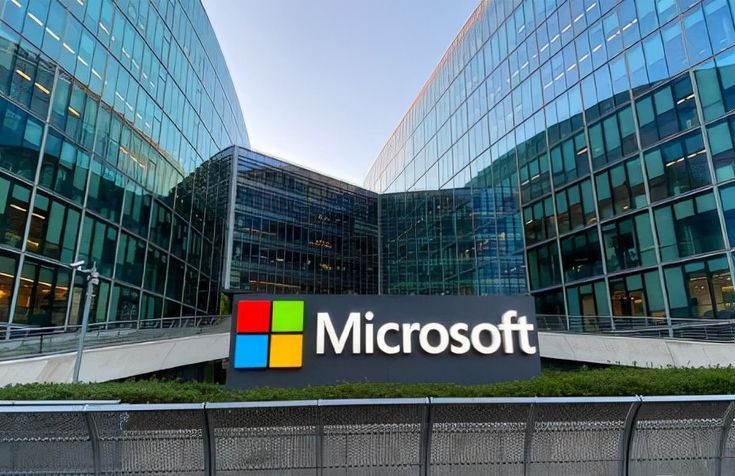
Introduction, Microsoft: Five Decades of Digital Dominance
From its humble beginnings in an Albuquerque garage to becoming the world’s most valuable company, Microsoft’s journey represents the evolution of modern computing. With a current market valuation exceeding $3 trillion, Microsoft has successfully reinvented itself across multiple technological eras while maintaining its position at the industry’s forefront. This comprehensive analysis examines Microsoft’s strategic pivots, product evolution, and vision for an AI-driven future.
Chapter 1: The Foundation Years (1975-1990)
Birth of an Empire
- April 4, 1975: Founded by childhood friends Bill Gates and Paul Allen
- First Product: Altair BASIC interpreter (1975)
- Key Move: Licensed MS-DOS to IBM (1981) for $50,000, retaining rights
Windows Revolution
- Windows 1.0 (1985): Introduced a graphical interface to the masses
- Windows 3.0 (1990): First commercially successful version (10M copies)
- Business Strategy: Per-copy licensing created a recurring revenue model
Early Competition
- Battled Apple over GUI concepts
- Fought IBM in OS/2 partnership fallout
- Emerged as the PC software standard bearer
Chapter 2: The Monopoly Era (1990-2000)
Windows Dominance
- Windows 95: Landmark launch with Start menu (1M copies in 4 days)
- Windows NT: Foundation for enterprise computing
- Office Suite: Bundled strategy captured 90% market share
Antitrust Battles
- 1998 US Case: Found guilty of monopolistic practices
- 2004 EU Ruling: €497M fine for media player bundling
- Impact: Forced business practice changes
Internet Wars
- Internet Explorer vs Netscape
- MSN online service attempts
- $500M investment in Comcast (1997)
Chapter 3: The Lost Decade (2000-2010)
Missed Opportunities
- Slow mobile response (Windows Mobile failures)
- Zune media player flop
- Vista OS debacle (2007)
Bright Spots
- Xbox 360 success (84M units)
- SharePoint enterprise adoption
- $8.5B Skype acquisition (2011)
Leadership Transition
- Gates steps down as CEO (2000)
- Ballmer’s “Developers!” era
- Early cloud experiments (Azure 2008)
Chapter 4: The Nadella Renaissance (2014-Present)
Strategic Pivots
- “Mobile First, Cloud First” vision
- Open source embrace (Linux on Azure)
- $26B LinkedIn acquisition (2016)
Cloud Dominance
- Azure growth from $1B to $110B+ revenue
- 60+ data center regions worldwide
- Hybrid cloud solutions (Azure Stack)
AI Leadership
- $13B OpenAI partnership
- Copilot integration across products
- 1M+ custom AI models on Azure
Chapter 5: Business Segment Deep Dive
Productivity & Business Processes
- Office 365: 400M+ paid seats
- Dynamics 365: 30% annual growth
- LinkedIn: $15B revenue (2023)
Intelligent Cloud
- Azure: 22% market share
- GitHub: 100M+ developers
- Enterprise Services: $25B business
More Personal Computing
- Windows OEM: 1.4B active devices
- Xbox: 34M Game Pass subscribers
- Surface: $7B annual revenue
Chapter 6: Financial Powerhouse
2024 Financial Highlights
| Metric | Value | Growth |
|---|---|---|
| Revenue | $236B | 11% YoY |
| Net Income | $83B | 20% YoY |
| R&D Spend | $27B | 15% YoY |
Investment Strategy
- $130B+ cash reserves
- 50+ acquisitions past decade
- Strategic venture investments
Chapter 7: The AI Future
Copilot Ecosystem
- Integration across Windows, Office, and Edge
- 1,000+ enterprise customers
- $10/user/month pricing model
AI Infrastructure
- Custom AI chips (Athena project)
- 50,000+ Nvidia H100 GPUs
- AI supercomputing partnerships
Regulatory Challenges
- FTC scrutiny of OpenAI ties
- EU AI Act compliance
- China market restrictions
Chapter 8: Gaming & Entertainment
Xbox Evolution
- 80M+ Series X/S consoles sold
- Activision-Blizzard $69B acquisition
- Cloud gaming investments
Content Strategy
- 32 first-party studios
- Call of Duty ecosystem
- Xbox Game Pass value proposition
Chapter 9: Hardware Ventures
Surface Innovations
- AI-enhanced Surface Pro 10
- Surface Laptop Studio 2
- Adaptive Accessories lineup
Mixed Reality
- HoloLens military contracts
- Meta’s partnership for VR
- 5,000+ Mesh enterprise customers
Chapter 10: Challenges & Controversies
Ongoing Issues Microsoft
- Windows 11 adoption slowdown
- Azure growth rate concerns
- AI ethics controversies
Competitive Threats
- AWS cloud dominance
- Google AI advancements
- Apple Silicon transition
Conclusion: The Next Frontier
Microsoft stands at a crossroads between its legacy software business and AI-powered future. With investments spanning quantum computing, nuclear energy, and brain-computer interfaces, Satya Nadella’s vision extends far beyond traditional tech. As Microsoft approaches its 50th anniversary, its ability to balance innovation with responsibility may determine whether it remains the world’s most valuable company for decades to come.















One thought on “Microsoft: Tech Giant Evolution”